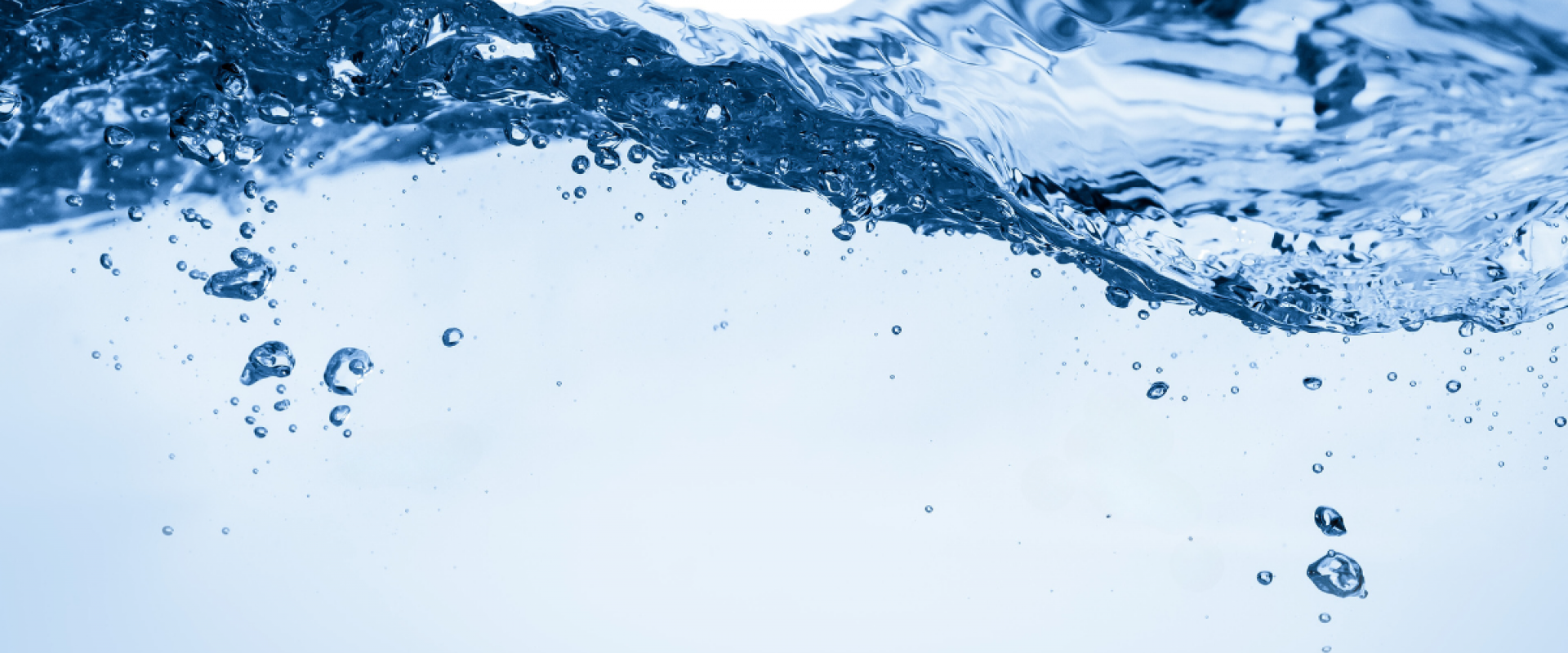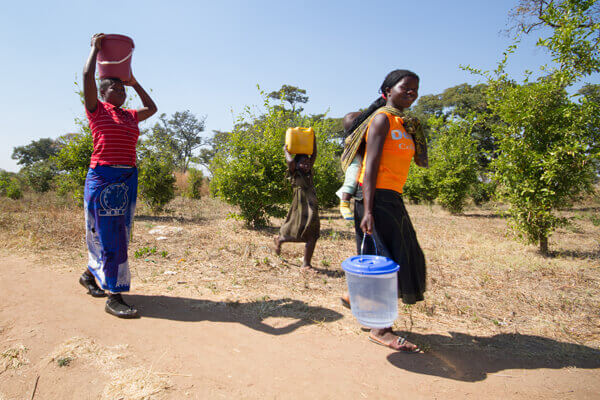
World Water Day 2026

Sustainable Development Goals (SDG) can help with global water sustainability for World Water Day 2026.
As World Water Day 2026 approaches, it is important to think about how important water is and how the Sustainable Development Goals (SDGs) can help solve the world's water problem. This day, which is celebrated every year on March 22, brings attention to how important water is and how it affects our health, the world, and our way of life.
The Earth is mostly made up of water. Despite this, only 2.5% of it is new, and less than 1% is easily accessible and safe for humans to use. Because the world's population is growing and climate change is making things more vulnerable, making sure everyone has access to water is a very important issue.
One of the main goals of the Sustainable Development Goals set by the United Nations is to make sure that everyone has access to water and sanitation and that they are managed in a way that doesn't harm the environment. By 2030, the SDGs will have made the future better and more stable for everyone around the world. Today, World Water Day 2024, is a chance to think about these big goals and see how far we've come.
Looking at the Water Crisis
Even though there is plenty of water, about 2.2 billion people around the world do not have access to clean drinking water. The current situation is made worse by climate change, population growth, pollution, and insufficient infrastructure. This is why effective water control measures need to be put in place.
The trouble with the water can't be seen as a separate issue. Concerns about health, food stability, energy production, and environmental protection are just some of the other issues that this phenomenon is linked to. Malnutrition, the spread of diseases, and the worsening of poverty are all linked to bad water quality and bad sanitation habits.
Why the Sustainable Development Goals (SDGs) are important
The 17 global goals that make up the SDGs were created in 2015 and are meant to be a "guide to attain a superior and enduring future for everyone." Clean water and sanitation are very important, and SDG 6 puts a lot of stress on them. The statement recognizes how important safe water and cleanliness are for people's health, the health of the environment, and the economy. It also talks about the importance of sustainable water resource management.
As the date for the Sustainable Development Goals (SDGs) in 2030 draws near, World Water Day 2026 becomes even more important. This is a reminder of how important it is for all of us to protect water supplies so they can be used for a long time and make sure everyone has access to clean, easy-to-reach water.
World Water Day 2026 will use the Sustainable Development Goals.
The celebration of World Water Day 2026 is a unique chance to highlight how important water is to the Sustainable Development Goals (SDGs) and how these goals are bound together. One way to use the Sustainable Development Goals (SDGs) to improve the world's water situation is through a variety of methods, such as:
- Supporting Integrated Water Resources Management (IWRM): IWRM is the planned development and management of water, land, and other resources that are connected to them. The goal is to improve economic and social well-being in a fair way while protecting ecological systems for the long run.
- An important part of fixing the water problem is putting a lot of money into infrastructure. This includes building water supply and sanitation facilities as well as better irrigation systems for farming.
- Improving Institutional Capabilities and Policy Frameworks: For water management to work well, institutions and policies need to be strong. This includes making sure that laws about water quality are followed, that methods that use less water are promoted, and that policies about water take into account the needs of the most vulnerable people.
- Facilitating Collaboration and Participation: In order to reach Sustainable Development Goal 6, many groups must work together. These groups include local communities, businesses, civil society groups, and government agencies. Collaboration can help people come up with new ideas and make water management methods more inclusive and long-lasting.
- A lot of people don't know how bad the global water problem is or what might happen as a result. This can be fixed by improving education and raising awareness. Campaigns to teach people about water issues and encourage safe water use are very important for getting people to work together to solve water problems.
How we got to World Water Day 2026 and what happened afterward
It's important to think about what we can do as individuals to help make water preservation better before World Water Day 2026. There isn't a huge problem with the water issue. Still, solving this problem requires everyone to work together and be completely committed.
People can make a difference by using water more efficiently, reducing waste, and actively supporting measures that will change things for the better. When governments make policies, decide how to spend money on building infrastructure, and enforce rules, they can give water issues top importance. Business organizations can use methods that use less water, support improvements in water technology, and take an active role in water stewardship efforts.
World Water Day 2026 is a time to both think about water issues and take action to solve them. This is a chance to learn more, become more aware, and have a good effect on efforts around the world to reach SDG 6. The resources that are related to the Sustainable Development Goals (SDGs) are very useful for dealing with the water problem. By using these tools, we can make big strides toward making sure that everyone has access to clean water.
Water is an important part of what keeps life going, keeps ecological systems healthy, and helps the economy grow on our world. As World Water Day 2026 approaches, it is important to remember how important water is and how hard it is for many people to get it.
The Sustainable Development Goals (SDGs), especially SDG 6, give us a complete plan for how to deal with these problems. They are a reminder of how world problems are linked and how important it is to find solutions that cover everything. We are moving toward a sustainable water future by using the tools that are linked to the Sustainable Development Goals (SDGs).
The 2026 World Water Day will be a big step forward in this effort. For this day's celebration, let us once again pledge our support for protecting water sustainability, making the best use of Sustainable Development Goal (SDG) resources, and working toward a world where everyone has access to safe, clean water. We are the ones who start the process that will lead to 2030 and beyond. When we work together, we have the power to make things better.
World Water Day Themes
| Year | Theme | Awareness Topic |
|---|---|---|
| 1993 | Water for Cities | Access to clean water in urban areas |
| 1994 | Caring for Our Water Resources | Shared responsibility in water conservation |
| 1995 | Women and Water | Role of women and gender inequality in water access |
| 1996 | Water for Thirsty Cities | Managing water scarcity in growing urban areas |
| 1997 | The World's Water: Is There Enough? | Global water availability and future challenges |
| 1998 | Groundwater – The Invisible Resource | Importance of groundwater in water systems |
| 1999 | Everyone Lives Downstream | Impact of water pollution and interconnectivity |
| 2000 | Water for the 21st Century | Modern challenges and innovations in water management |
| 2001 | Water for Health | Safe water as a foundation for public health |
| 2002 | Water for Development | Role of water in economic and social development |
| 2003 | Water for Future | Long-term strategies for water sustainability |
| 2004 | Water and Disasters | Managing floods, droughts, and related risks |
| 2005 | Water for Life 2005–2015 | MDG-era commitment to global water access |
| 2006 | Water and Culture | Cultural value of water and traditional practices |
| 2007 | Coping with Water Scarcity | Policy and practical solutions for water shortages |
| 2008 | Sanitation | Clean water and proper sanitation as a human right |
| 2009 | Trans Waters | Cooperation across borders for shared water resources |
| 2010 | Clean Water for a Healthy World | Protecting water sources to support public health |
| 2011 | Water for Cities | Addressing urban water management challenges |
| 2012 | Water and Food Security | Ensuring water for agriculture and global food supply |
| 2013 | Water Cooperation | Promoting shared solutions and partnerships |
| 2014 | Water and Energy | How water and energy sectors are interconnected |
| 2015 | Water and Sustainable Development | Water's role in achieving sustainability goals |
| 2016 | Water and Jobs | Employment created through water-related industries |
| 2017 | Wastewater | Reuse and safe management of wastewater |
| 2018 | Nature for Water | Using nature-based solutions for water management |
| 2019 | Leaving No One Behind | Equity in water access for all, including refugees |
| 2020 | Water and Climate Change | Water’s role in climate resilience and adaptation |
| 2021 | Valuing Water | Recognizing water’s true worth beyond economics |
| 2022 | Groundwater: Making the Invisible Visible | Raising awareness about hidden water sources |
| 2023 | Accelerate Change | Calling for urgent action to solve the water crisis |
| 2024 | Leveraging Water for Peace | Promoting cooperation over shared water resources |
| 2025 | Glacier Preservation | Highlights glaciers' role in freshwater supplies and the need to protect them amid climate change; part of the International Year of Glaciers' Preservation |
